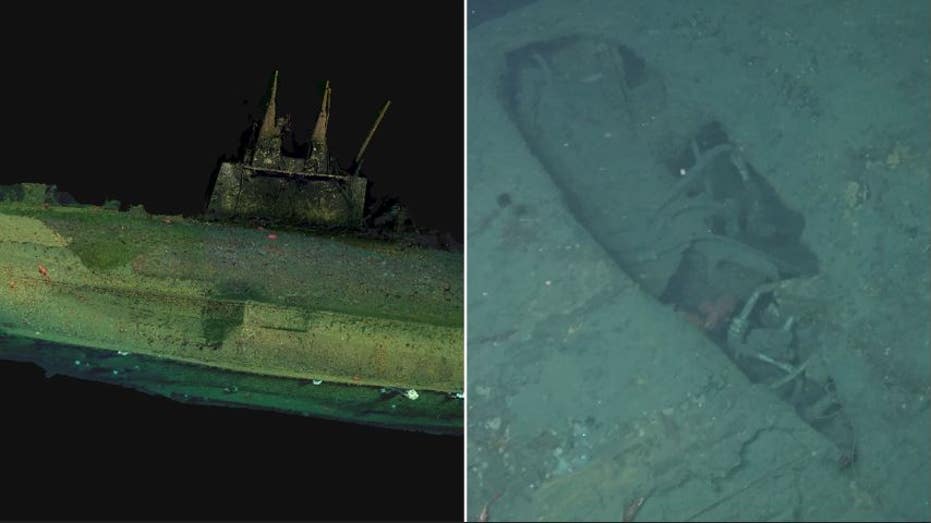- by foxnews
- 26 May 2025
Never-before-seen photos reveal WWI-era submarine 1,300 feet before surface where 19 sailors perished in 1917
The World War I-era USS F-1 submarine wreck, lost in 1917, was explored by researchers using advanced technology, capturing new images and its honoring fallen sailors.

In Dec. 1917, 19 sailors serving on a World War I-era U.S. submarine made the ultimate sacrifice during a training mission.
The U.S. Navy submarine, USS F-1, went down after a collision with its sister ship on Dec. 17, 1917, and now sits 1,300 feet below the surface on the ocean floor off San Diego.
"All of us at the NHHC are grateful for this collaboration, which also enabled us to document and assess the condition of the crafts."
From Feb. 24 to March 4, researchers with the Woods Hole Oceanographic Institution (WHOI) used its human-occupied submersible Alvin, and an autonomous underwater vehicle known as Sentry belonging to the National Deep Submergence Facility, to capture close-up images of the wreck.
"As a Navy veteran, making this dive - together with another Navy veteran and a Navy historian - was a solemn privilege," said Office of Naval Research Program Officer Rob Sparrock, who was in the submersible as it when it surveyed the submarine.
"Lasting nearly eight hours, there was time to contemplate the risks that all mariners, past and present, face. sIt also reminded me of the importance of these training dives, which leverage the knowledge from past dives, lessons learned and sound engineering."
While studying the submarine, the scientists also surveyed a Navy torpedo bomber training aircraft that went down in the same place in 1950.
"Once we identified the wreck and determined it was safe to dive, we were able to capture never-before-seen perspectives of the sub.
Surveying the submarine involved seven dives that were part of a planned training and engineering mission to give submersible pilots-in-training practical experience.
The team held a remembrance ceremony for the lost sailors, ringing a bell 19 times on the research vessel Atlantis directly above where the submarine lies.
"History and archaeology are all about people and we felt it was important to read their names aloud," Krueger said.
"The Navy has a solemn responsibility to ensure the legacies of its lost sailors are remembered."
Advanced imaging technology helped the team document the wreck, including multibeam sonar systems on the Atlantis and Sentry that produced detailed, high-resolution maps of the submarine.
That allowed the team to reconstruct the wreck using photogrammetry to make 3-D models.
"While these depths were well within the dive capability for Alvin and Sentry, they were technical dives requiring specialized expertise and equipment," said Anna Michel, NDSF chief scientist and co-lead of the expedition.
"We were careful and methodical in surveying these historical sites so that we could share these stunning images, while also maintaining the reverence these sites deserve."
- by foxnews
- descember 09, 2016
Airbnb deploys 'anti-party technology' for Memorial Day and Fourth of July weekends
Airbnb enhances its "anti-party technology" to curb disruptive events during Memorial Day and Fourth of July weekends, the company says, affecting travel and party plans nationwide.
read more



